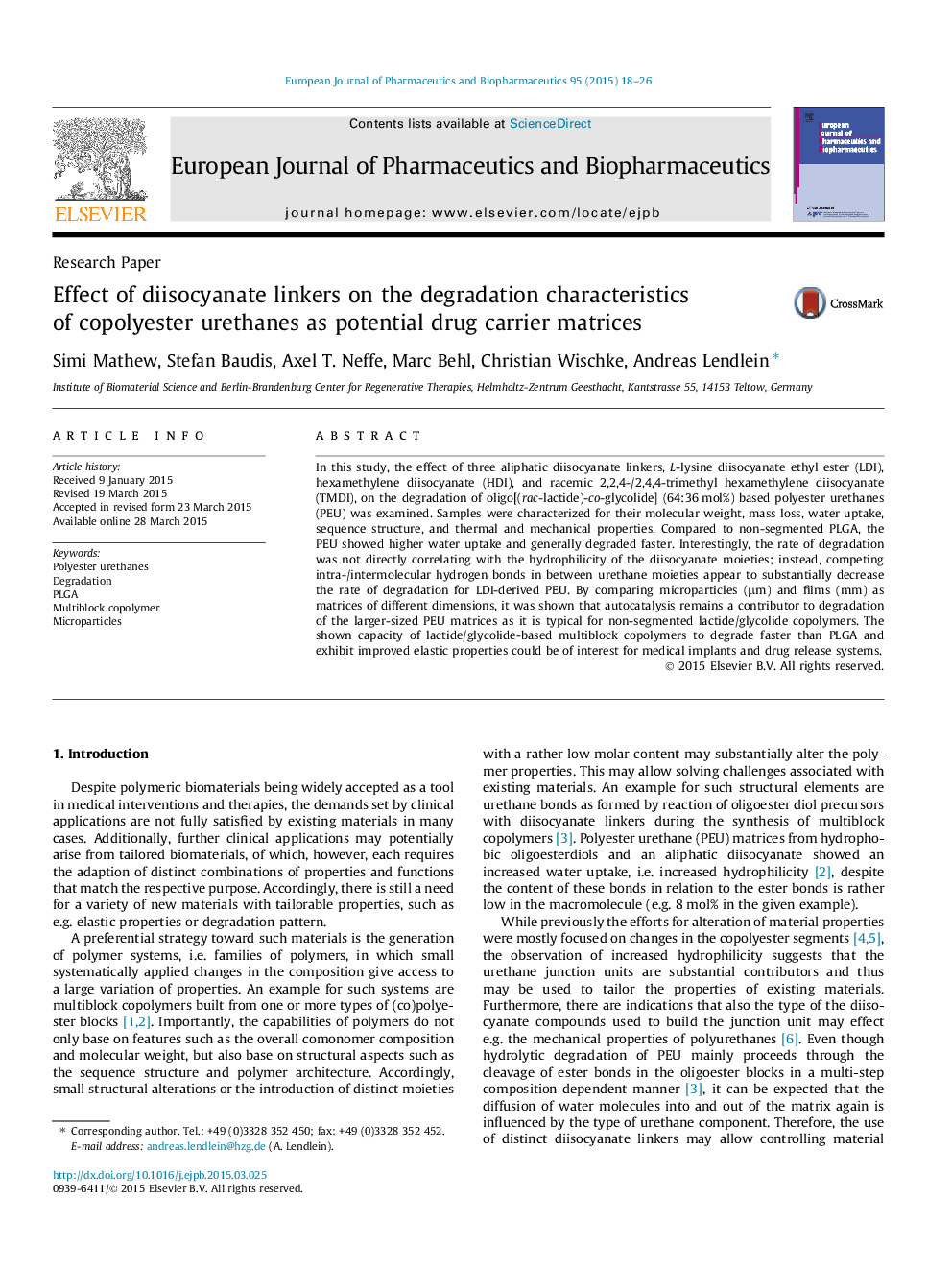| Article ID | Journal | Published Year | Pages | File Type |
|---|---|---|---|---|
| 2083364 | European Journal of Pharmaceutics and Biopharmaceutics | 2015 | 9 Pages |
In this study, the effect of three aliphatic diisocyanate linkers, L-lysine diisocyanate ethyl ester (LDI), hexamethylene diisocyanate (HDI), and racemic 2,2,4-/2,4,4-trimethyl hexamethylene diisocyanate (TMDI), on the degradation of oligo[(rac-lactide)-co-glycolide] (64:36 mol%) based polyester urethanes (PEU) was examined. Samples were characterized for their molecular weight, mass loss, water uptake, sequence structure, and thermal and mechanical properties. Compared to non-segmented PLGA, the PEU showed higher water uptake and generally degraded faster. Interestingly, the rate of degradation was not directly correlating with the hydrophilicity of the diisocyanate moieties; instead, competing intra-/intermolecular hydrogen bonds in between urethane moieties appear to substantially decrease the rate of degradation for LDI-derived PEU. By comparing microparticles (μm) and films (mm) as matrices of different dimensions, it was shown that autocatalysis remains a contributor to degradation of the larger-sized PEU matrices as it is typical for non-segmented lactide/glycolide copolymers. The shown capacity of lactide/glycolide-based multiblock copolymers to degrade faster than PLGA and exhibit improved elastic properties could be of interest for medical implants and drug release systems.
Graphical abstractFigure optionsDownload full-size imageDownload high-quality image (105 K)Download as PowerPoint slide
